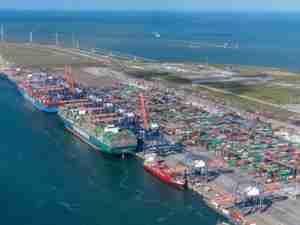The cassette system contains of a combination of translifters and cassettes. The cassettes are detachable steel platforms, which containers will be loaded on for transporting. The translifter is a self-loading trailer with 62-tonnes loading capacity. This design allows it to be coupled to any universal towing tractor. These manually operated vehicles lift and move the cassettes using hydraulic systems. The translifter is lowered and driven underneath the cassette and then raised until the cargo is loaded for further transportation.
The delivery is set to meet the expanding demands of the terminal’s traffic which has doubled since container operations were moved from NIT (Norfolk International Terminal) to the APM terminal in Portsmouth Virginia over the summer, amounting to in excess of 1 million TEU of additional traffic. This move was the result of a deal where Virginia Port Authority (VPA) is leasing the operations from APM Terminals and was signed in July 2010.
In 2007 TTS Port Equipment AB designed and supplied the port’s container handling system. With this additional delivery there will be in total 20 translifters and 420 cassettes in operation in the APM Terminal.
The initial contract to equip the new terminal allowed TTS the opportunity to roll out its revolutionary container handling system for the first time in the US. The Gothenburg-based company had studied operations in many container terminals worldwide and found that most are still using methods that have been in place for many years, operators typically increasing capacity by buying greater quantities of equipment rather than considering new ways of handling cargo.
TTS found that container terminal managers are now having to rethink their approach to container handling as many terminals are reaching capacity limits. And there are several, often conflicting goals, such as to serve a container ship as fast as possible, while also minimising terminal equipment costs.
“In our container terminal system the cassette acts as a floating buffer between container cranes and the terminal transport vehicles that transfer containers to or from a road or rail carrier,” says Michel Lyrstrand, Vice President, R&D at TTS Port Equipment AB. “Using this system, containers are quickly and easily disconnected from expensive terminal transport equipment, thus ensuring that the cranes continue to operate without stopping. This floating buffer concept is the key to our innovation in the container terminal market.”









